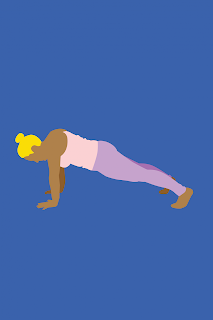If you want to lose weight and get fit this year, you might be wondering "How do I get started? Where is my motivation? What do I need to do?"
A crucial component that's been integral to my weight loss and
overall fitness over the past several years has been being a part of a fitness challenge group.
The encouragement, support, friendly competition (and let’s be
honest — the kick in the butt) that
a fitness challenge group provides is what I need to kick-start and stick with
my diet and fitness resolutions.
I know this from experience.
I've been lucky enough to participate in two different Beachbody
test groups. In 2011, I participated in the RevAbs test group and lost 15
pounds in three months.
In the summer of 2012, I was a member of the Les Mills Combat
test group, and I lost 20 pounds in 60 days.)
And in 2014, I lost eight pounds doing the 8-week STRONGER Challenge with
the huboffitness team.
We’re starting an 8-week STRONGER Fitness Challenge for
the new year, and we’re inviting you and all of our readers to join us. We made
it our resolution to try to help as many other people as possible get fit.
That's why we made our STRONGER premium fitness program
COMPLETELY FREE for everyone.
1. Daily words of motivation from top
trainers
Most of us find it too expensive to hire a personal trainer —
never mind a celebrity trainer — to provide support and those words of wisdom.
I realize that I have been lucky to work with top trainers in my past challenge
groups.
In the RevAbs test group, Brett Hoebel gave us in-person pep
talks and video updates to keep us motivated. In the Les Mills Combat test
group, we received video updates from Dan Cohen, Rachael Newsham and our
in-person trainers.
During the 8-week STRONGER Challenge, you'll get daily video motivation from
Nicky Holender. Nicky is an expert trainer and motivator with celebrity and
athlete clients, including Gordon Ramsay, Robbie Williams, Mel B, Gerard
Butler, Salomon Kalou and more.
What does a daily motivational video from Nicky look like?
Here's your day 1 motivation to get you fired up to do your first 30-minute
HIIT workout
2. Daily exercise routines prescribed by a
professional trainer
Left to
my own devices, I would just do a yoga class or head to the gym and jump on the
elliptical and watch TV. But those types of self-guided workouts — even when I
did them five or six times a week — NEVER got me to lose 15 or 20 pounds. In
fact, choosing my own daily workout routine never even got me to lose five
pounds.
This is
how I understand and know from experience that fitness challenge groups offer
something that is truly an advantage over regular old self-directed gym
routines.
The
fitness challenge groups that helped me lose weight consisted of different
daily workouts programmed for the group by professional trainers that involved
high intensity interval training (HIIT), strength training, plyometrics and
core work. The workouts don't need to be long, they simply need to challenge
you and provide variety that keeps you coming back for more.
3. A simple daily meal plan
created by a professional dietitian
Most
of us can’t afford consultation with a nutritionist or dietitian to come up
with a meal plan that supports our diet and fitness goals.
As I
mentioned again and again, I’ve achieved my best success as a part of fitness
challenge groups. In those groups an essential component was the meal plan and
sticking to it.
In creating STRONGER, we
decided to work with nationally-recognized nutritionist, author The best part:
If you decide to eat something different (say a burrito at Chipotle),
Getting
a flexible easy-to-prepare daily meal plan complete with recipes and grocery
shopping lists emailed to me is yet another reason why I’m looking forward to
starting the STRONGER Challenge.
4. Support and friendly competition from a
great group of people
During the two challenge groups I participated
in, getting through day 1, day 15, day 30, day 45 and so on, was not always
easy. Some days were particularly harder than others. Whenever I needed
motivation, I turned to my online group of fellow test group participants who
started with me on day one.do well to like and subscribe to our newsletter.

















































































